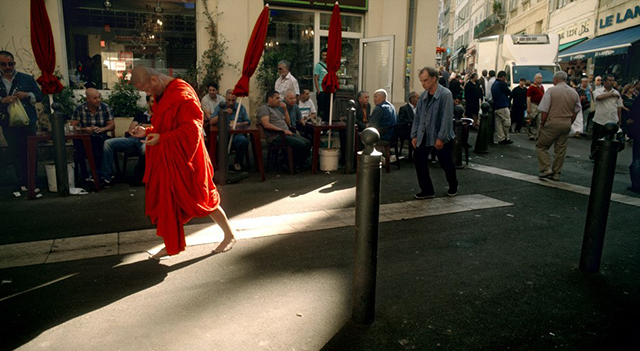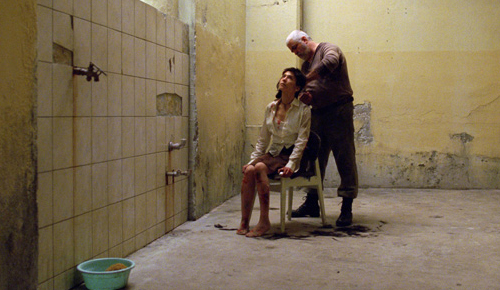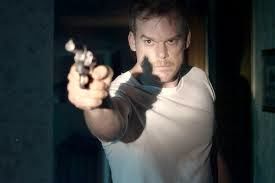
Xi You – Journey to the West
Written and directed by Tsai Ming Lang
Based on a novel by Ch’eng-En Wu
2014, France, Taiwan
“All composed things are like a dream/ A phantom, a drop of dew, or a flash of lightning/ That is how to mediate on them/ That is how to observe them” The Diamond Sutra, end credits of Xi You
Presented in the FNC Lab section, a section that features experimental and minimalistic films, Tsai Ming Lang’s Xi You- Journey to the West is a beautiful and stylistic piece on Lee Kang Sheng and his very slow walk. In Ming Lang’s words: “In 2011, Lee Kang Sheng walked very slowly on the stage during my play called Only you. His performance was so perfect that I decided to film it”. Xi You is Tsai Ming Lang’s latest film out of his six “Walker” film series that seek to document the particular walk. It takes place in the city of Marseille, France.
The inspiration behind the title goes back to a 16th century Chinese novel. Attributed to Wu Cheng’en, it tells the story of the monk Xuanzang, who travelled far to the west, India, to find the sutras or Holy Scriptures. The movie takes both the story and Kang Sheng’s walk as an inspiration, the west being here the French port of Marseille. Ming Lang’s perfect cinematography and image composition definitely give to the whole movie the eerie and spiritual quality necessary for such a tale.
Xi You is a wonderful experience for the spectators who will be able to accept its slow pace and to enjoy every little moment and movement. It is a beautiful moment in time, experienced in slow motion. It is also a reflection on time, and its two measures. Kang Sheng’s pace, that defies our modern conception of rapid time, clashes with the pedestrians who pass him by. They dissapear quickly from the frame, occasionally looking at him but never for too long. Hundreds of people have passed before Kang Sheng is out of the frame. Even I can barely prevent myself from looking at my cell phone being not used to the film’s pace, living in this fast and hyperactive society. The film is such an exercise of attention and patience that it forces appreciation for time. The film captures well the lapse and gap between those two measures of time, Kang Sheng’s eternity and the modern busy life, where Kang Sheng never seem to truly fit.
Indeed, Kang Sheng lives in a different time, in a different world but yet he shares the same physical space. He even gains a companion and mirror image, as Denis Lavant starts to imitate him and walk with him. Imitations, mirrors,with absurd and impossible geographies all play with our perception. He redefines a new space, anchored in the reality we know, but changing from an accurate representation of reality to scenes with inconsistencies and alterations.
Every shot reflects the plenitude and infinity of time. The beauty of slow movement too, of the world and of Keng Shang’s gesture, as we witness his body moving millimeter per millimeter to exit the frame. Tsai Ming Lang plays with our perceptions, with upside downs, mirrors, reflections and mirages in his sequences. The sparkling sea where a figure is shot laying at rest and breathing deep celebrates the beauty of nature, and of its natural rhythm, so different from our goal-oriented- always on the move towards some uncertain goals- modern societies.
There are many explanations and analysis that can be made of this movie, and its spirituality, such as the book that inspired its title, Lee Kang Sheng himself or the different reflections on life, time, our relationship with the natural world and modern societies. But beyond that, the film offers a unique enjoyable and hypnotic experience, where the story is stripped at its bare minimum and time is suddenly slowed down to allow for contemplation, contemplation of movements, of the sparkling sea, of Ming Lang’s beautiful shots.
Anne-Myriam Abdelhak





